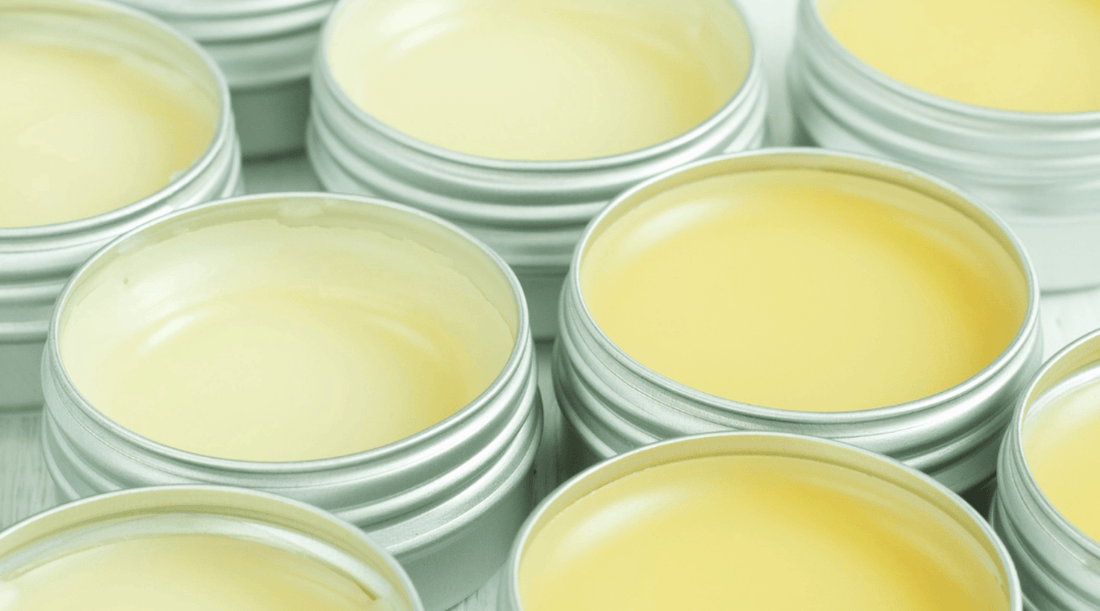
What Is the Difference Between a Balm and a Salve?
Share
When it comes to natural skincare, it’s easy to feel overwhelmed by the wide variety of products available. Among the most common remedies are balms and salves, two types of skincare treatments that are often used interchangeably. However, while they may seem similar, there are key differences that set them apart. Understanding these differences can help you choose the right product for your specific skincare needs.
In this post, we’ll explore the distinctions between herbal balms and salves covering everything from ingredients and texture to application and benefits. Whether you’re dealing with dry skin, muscle soreness, or minor cuts, knowing when and why to use a balm or a salve can make a big difference in your self-care routine.
1. What Sets a Balm Apart from a Salve?
At their core, both balms and salves are topical treatments used to soothe and heal the skin. However, they differ in composition, texture, and how they interact with the skin.
A balm is typically thicker and more concentrated. It's made with a blend of oils, butters, and waxes that form a protective barrier, locking in moisture. Solid at room temperature, balms slowly melt into the skin, offering deep hydration and long-lasting protection. Ideal for cracked heels, chapped lips, or windburned cheeks.
A salve, in contrast, has a softer texture with a higher ratio of herbal-infused oils. Salves absorb more easily and are ideal for targeting skin conditions like bruises, inflammation, or muscle aches. Their herbal potency and quick absorption make them incredibly versatile for everyday skin repair.

2. The Role of Active Compounds
What gives herbal balms and salves their real skin-loving magic? The answer lies in their active plant compounds. Whether infused into oils or blended in their natural resinous form, these compounds offer therapeutic benefits.
For example, flavonoids found in calendula or chamomile calm inflammation and irritation. Alkaloids like taspine (from dragon's blood) promote cell regeneration and wound healing. Resin acids found in pine and frankincense protect against infection, while terpenes and essential oils provide antimicrobial, analgesic, and aromatic support.
These constituents work together to nourish, protect, and repair—making each balm or salve more than just a moisturizer. It’s plant-powered recovery at its finest.
3. Ingredients: The Herbal Heart of Each Formula
Balms and salves may share similar base oils, but the way herbs are incorporated sets them apart.
Balms often use rich oils like jojoba or almond, thickened with beeswax or cocoa butter for structure and long-term skin protection. While they may contain essential oils, balms generally have fewer herb infusions, focusing more on moisture retention.
Salves prioritise herbal infusions. Dried herbs like arnica, calendula, plantain, and lavender are steeped for weeks in oils to extract their full range of healing compounds. These are then blended with beeswax to form a semi-solid product that delivers targeted benefits.
Want to see an example? Check out our Calendula Tallow Skin Repair Balm, packed with calendula and plantain for soothing and repairing dry or damaged skin.
4. Texture and Application
The texture of a balm is firmer, making it perfect for precise application to small, dry, or cracked areas. It creates a long-lasting barrier that shields the skin from harsh conditions—think cold wind, dry indoor air, or constant hand washing.
A salve, being softer and more spreadable, is better for applying over larger areas. It penetrates the skin faster, often bringing near-instant relief from irritation or soreness. This makes salves ideal for muscle rubs, first-aid applications, or all-over skin conditioning.
5. When to Use a Balm vs. a Salve
Knowing when to reach for a balm or salve depends on your needs.
Use a balm if:
- Your skin is extremely dry or cracked
- You need a protective barrier against the elements
- You want something long-lasting on areas like lips, elbows, or heels
Use a salve if:
- You’re treating sore muscles, inflammation, or skin irritation
- You want faster absorption and less residue
- You need herbal support for cuts, bruises, or healing skin
Looking for a soothing herbal salve for tension and soreness? Try our Arnica Relax & Relieve Salve formulated with cayenne, arnica, and turmeric to calm aches and restore comfort.
6. The Power of Herbal Infusions
Herbal infusions are the lifeblood of any good balm or salve. Carefully selected plants are steeped into oils over weeks, drawing out their healing properties.
Calendula offers gentle anti-inflammatory support for dry, sensitive skin. Arnica works on bruising and sore muscles. Lavender and chamomile soothe irritation. And deeper resins like dragon’s blood and frankincense featured in our Dragon’s Tears Repair Salve—offer antimicrobial, regenerative benefits for serious skin recovery.
These botanical ingredients do more than moisturise they actively support your body’s natural healing process.
7. Final Thoughts
Balms and salves may seem like simple skincare staples, but they’re actually powerful tools rooted in herbal tradition. Understanding the differences; thickness, texture, herbal content, and use can help you make the most of your skincare routine.
Whether you’re protecting your skin from the cold, relieving aching muscles, or treating a minor wound, there’s a balm or salve ready to support you. At Tree of Asteria, our formulations blend rich botanicals, slow infusions, and purposeful ingredients to nourish your skin and restore balance.
The next time you reach for a natural remedy, you’ll know exactly which one your skin is asking for.





